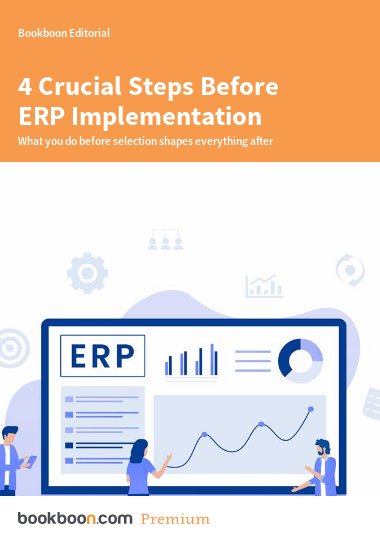Implementing an Enterprise Resource Planning (ERP) system is one of the most complex and costly transformations an organisation can take on. The success of this system lies heavily in how you structure the implementation before it becomes operational.
In her book ERP Selection and Implementation, Professor Lineke Sneller highlights four key principles that organisations need to decide on upfront. These set the stage for the entire ERP lifecycle:
1. Preselect ERP suppliers, implementation partners, and service providers
Before the ex ante evaluation phase, create a list of possible ERP suppliers and partners. Narrow it down by reviewing presentations and assessing which combinations fit your needs best. This is significant because you’re choosing who you’ll be working with and who can offer you long-term support.
If you do this well, you’ll avoid managing dozens of complicated combinations and ensure you work with well-aligned teams.
2. Decide on the Sourcing Basis
Will your internal team lead the implementation, or will an external partner take charge?
Turn-key: The implementation partner handles everything, allowing for faster progress and expert use of the system. The disadvantage is that it can lead to knowledge gaps later and a heavy reliance on outsiders.
Do-it-yourself: Your employees take the lead, using their deep understanding of your processes. It builds commitment and can reduce costs, though it usually takes more time and risks internal burnout or even tunnel vision.
Getting the balance right is key to staying in control and making the system truly work for you.
3. Choose a Model-Building Strategy
How will you standardise or tailor the ERP across your organisation?
One Instance: Full standardisation everywhere. Everyone uses the same system, processes, and data. It’s efficient but rigid.
Kernel: Offers a middle ground. A core template is used across the organisation, with local teams building extensions to meet their own needs. This balances central control and gives flexibility.
Multi-Model: Separate models for each location or unit. It offers freedom but sacrifices consistency and shared insights.
4. Select a Go-Live Strategy
The go-live phase is one of the riskiest moments in the entire implementation. Choosing the right rollout strategy helps manage this risk.
Big Bang: Everyone switches over simultaneously. It’s fast, but high stakes. If it fails, everything is halted. Some companies soften the risk with a fallback plan, temporarily running both old and new systems in parallel.
Go-Live Per Function: Gradual rollout by function, location, or process. This adds complexity but gives time to adjust.
Deciding on these four principles before the evaluation phase helps avoid costly mistakes later. ERP implementation isn’t just about technology - it’s about making clear strategic choices early on.
These insights are the tip of the iceberg, taken from ERP Selection and Implementation by Prof. dr. Lineke Sneller RC. For a more detailed guide to getting ERP right, check out the full book.


